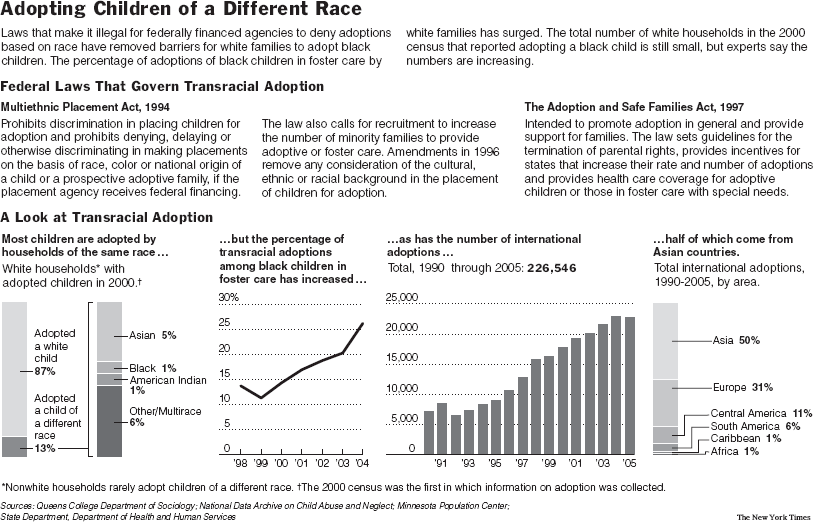| Want to send this page or a link to a friend? Click on mail at the top of this window. |
More Special Reports |
| Posted August 18, 2006 |
| Return to related text |
 |
||||||||||||||||
|
||||||||||||||||
Mark Schiefelbein for The New York Times |
||||||||||||||||
| Race was a secondary adoption factor; Maggie Mebruer's parents say. | ||||||||||||||||
|
||||||||||||||||
Mark Schiefelbein for The New York Times |
||||||||||||||||
| The Mebruers did not explicitly set out to adopt a black child. | ||||||||||||||||
|
||||||||||||||||
Mark Schiefelbein for The New York Times |
||||||||||||||||
| Emily Mebruer, a family doctor, said a judge's ruling that she and her husband were "uniquely unqualified" to parent a black child felt like "an indictment of us and our community. | ||||||||||||||||
|
||||||||||||||||
|
||||||||||||||||
|
||||||||||||||||
Sally Ryan for The New York Times |
||||||||||||||||
| Martina Brockway, Mike Timble and Rumeur, 3. The couple is hoping to adopt a black child. | ||||||||||||||||
|
||||||||||||||||
Sally Ryan for The New York Times |
||||||||||||||||
| Rumeur, the couple's bioligical daughter, is accumulating black dolls and black-themed children books in preparation for her new brother or sister. | ||||||||||||||||
|
Reprinted from The New York Times, National, of Thursday, August 17, 2006.
| Wehaitians.com, the scholarly journal of democracy and human rights |
| More from wehaitians.com |